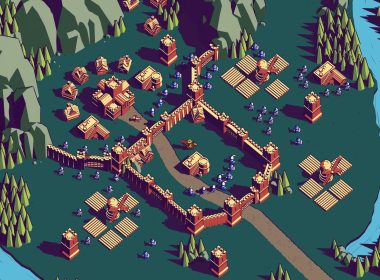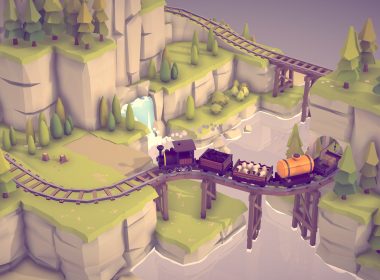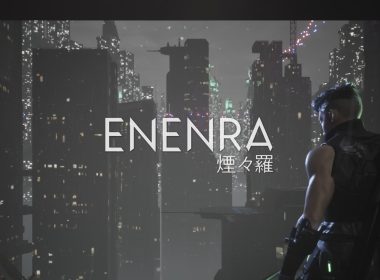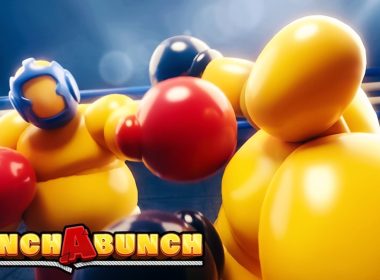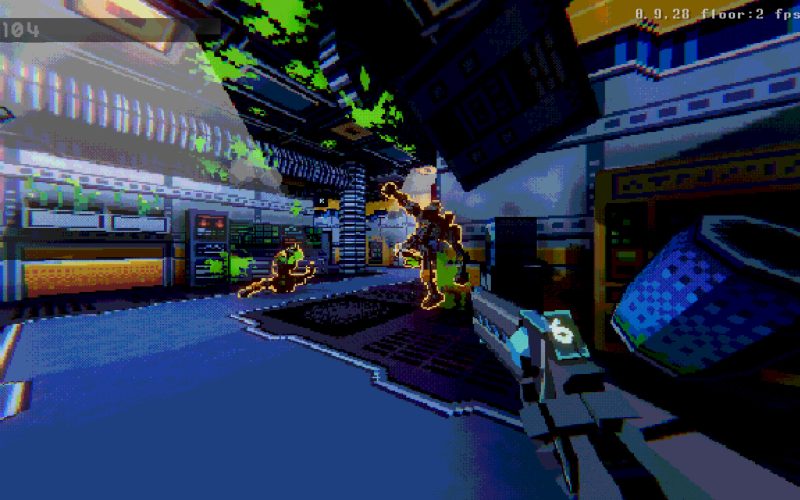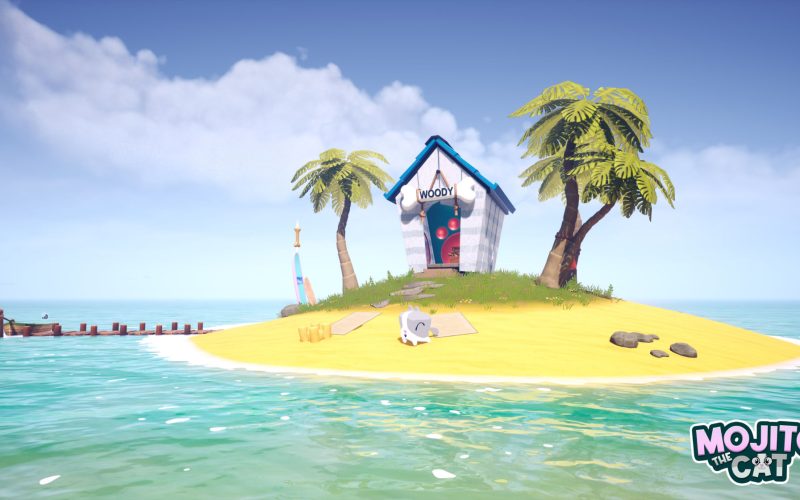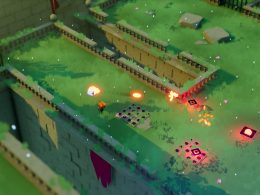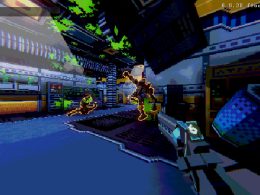Should we really introduce ABRISS? we are pretty sure that you’ve stumbled upon this great title already 🙂 so let’s jump straight into the interview with Johannes Knop, Chairman and Developer at Randwerk, the team behind ABRISS.
Could you tell us how your team started this project and which is your background?
During the first COVID lockdowns in the summer of 2020, Friedrich and Till approached me to ask me if I wanted to work on something based off a game they had made as a university project a couple semesters earlier. The game was called Antitect, and it was a game about destroying stuff. It was very different from ABRISS, but basically that’s where it came from.

Till, Friedrich and me all studied game design together at HTW Berlin. We had all worked as interns and on a lot of university projects, but ABRISS is our first commercial game and we’re really happy that people like it.
| Till Freitag | Till writes the custom build & destruction system. Every explosion you see, every piece of debris, every crack does exactly what it should. VFX and Core Gameplay. |
| Johannes Knop | “What do you do?” “Uuuh – several things”. A true Jack of all trades, Johannes does programming, sound design, UI, project management and even writes presskits. |
| Friedrich Beyer | The man behind the imagery, the style, the one and only. The sculptor, the painter, the artist. Not only a fantastic concept and tech artist, but also producing most assets. |
You write that you are a Cooperative on your website, what does that mean?
It’s basically like a democratic company. We really try to make all our decisions together, so everyone of us can participate in all big decisions. It’s a model that’s also used in the USA, France and Great Britain, for example Motion Twin from Dead Cells. It’s really important to us to try to make the game industry a little bit of a nicer space for us. As far as we know, we’re the first in Germany!
How did you come up with this great concept? Any inspiration from the past?
As mentioned above, the game was mostly based on an older university prototype. We looked to other destruction games of course, like Besiege or Teardown, but they’re really different. We’re mostly inspired by grandiose brutalist buildings, the beauty of disintegrating buildings, the city we live in and the electronic music here.

A great sound design, fantastic graphic assets, super fx and a stunning soundtrack. Did you build all these stuff in-house?!
Yes, all in-house. We have some sample packs for sound design, but we changed most of them up a bit. Friedrich made all the 3D models, and Till all the VFX. We used tools that had some presets of course, so some things like button sounds are just some samples we made deeper or faster or something, but yeah. All us. It was a lot of work.

In any level of ABRISS we see millions and millions of debris parts flying around. Technically speaking, how did you manage to achieve great performance even on pretty basic PC/Laptops.
We sometimes get that question: How can that work? How is it possible for so many things to be simulated and it still be performant? The answer is simple:
A: There just aren’t as many things – we just make it look like there are.
B: The performance just isn’t that good sometimes, but you don’t notice it. There are a lot of instances where we use GPU particles to have many small things flying around that don’t actually interact with anything, but they’re not there for long so it doesn’t matter. And there’s some bigger units that will only spawn smaller units when they’re destroyed, so it’s just a lot of optimization to make it look like a lot is happening when there isn’t really that much happening. And the performance goes down too in really busy simulations, if you have 60fps in the building phase, it can go down to 30 sometimes for a couple seconds; but there’s also some slow motion time-dilation effects, and the game isn’t an e-sports shooter with camera movement; so most people just don’t notice that their FPS just went down for a while

Could you tell us about your experience with Unity and how HDRP helped achieving the great look & feel of ABRISS?
The HDRPs features are very important for the look of ABRISS, most importantly the volumetrics for all our fog. But we appreciate all the post-processing options too, there’s just a lot more options than in URP or legacy. It does have some problems though, we sometimes had unexplainable bugs that we searched forever just to find some checkmark had to be disabled, and also it just shows a black screens on PCs that are not supported – I think we have some steam returns for that reason.

ABRISS levels are a sort of piece of art. Did you manage to build your own level editor or any other interesting internal tool?
We tried building our own level editor, because we thought about making it available for everyone and also maybe for making the level design process easier, but writing a Level Editor is very hard. We’d still love to have something like that, but it might never be feasible in the time and budget we have. If we have time. If it happens, we’d give it Workshop support for sure.
There are some custom tools, but they’re mostly small utilities, like a button that deletes the savegame or makes a fresh empty one, or one that takes a screenshot in the right resolution to be used as a level preview.

Are you planning any virtual reality integration?
To be honest, that would be a lot of work and the market for VR is still very small – we would basically burn money. There’s also a technical reason, we would need to switch render pipelines, I think the VR version of HDRP is still a separate render pipeline. But even then, the input would need to be built. I don’t think we will.
?ABRISS OUT NOW ON STEAM! ?
— ABRISS (@randwerk) April 14, 2022
Our game Abriss has just launched into Early Access!
It would mean a lot to us if you:
?retweet & share
⭕️give it a try
✍️leave a review after playing @Steam Link: https://t.co/aojiSbbIUN pic.twitter.com/ss7ALsXRKY
Do you mind to share some details about the tools/plugin your team is using the most and tell us how these tools are helping you?
Friedrich mostly used Blender and Substance Painter/Designer for all visual assets. The biggest pro for blender was that it is basically free, and it has so many cool small plugins you can enable. I really liked to program in JetBrains Rider, which I think is a bit more usable and customizable than the standard IDE. For the music and sound I used FL Studio.
